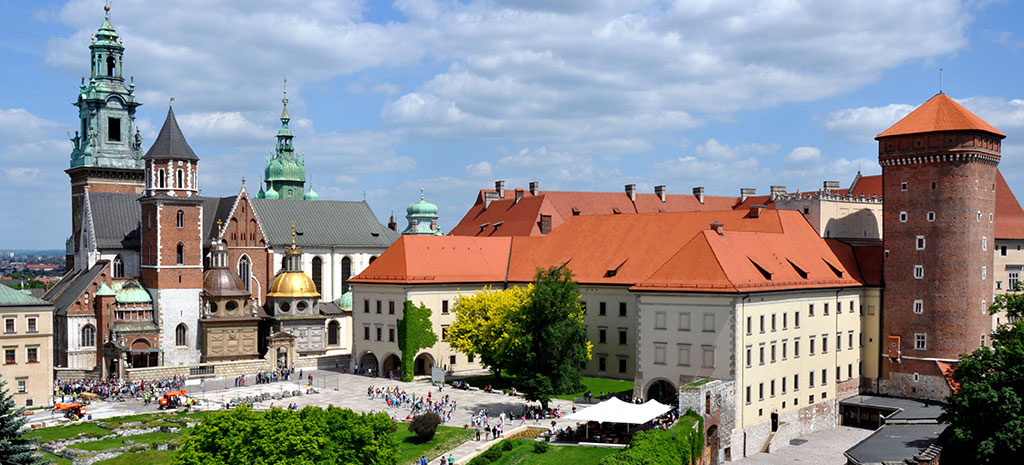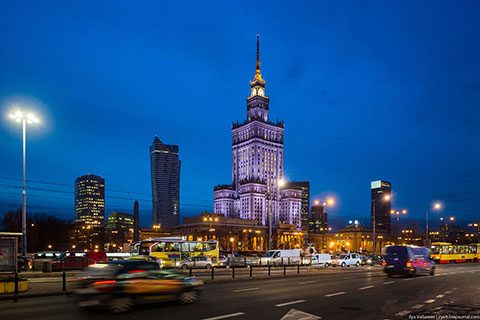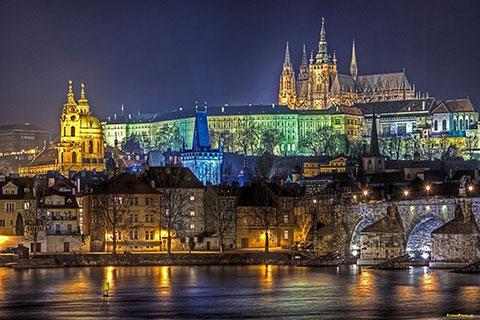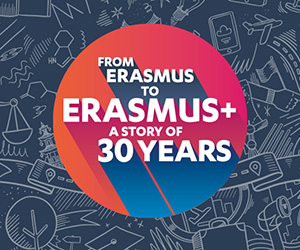
Study in Poland
Last edited on 28 Dec 2025
Welcome to Poland!
With a history dating back for over a thousand years, Poland’s cultural heritage is incredibly rich. This includes its longstanding traditions in the higher education sector, with the first university in Poland founded in the 14th century. Today, Poland is becoming an increasingly popular study destination, with more than 65,000 international students choosing to study there in 2016/2017 academic year, those are including 62,000 full degree studies and 3,000 within Erasmus+ Program.
Poland, with one of the best educational systems in the world according to the OCDE Pisa report, is also one of the largest countries of the European Union. With a long tradition in higher education, Poland hosts higher education institutions that date from the 14th century. The Jagiellonian University in Krakow, was established in 1364, as the second university in Central Europe and among top 100 most innovative universities in the world.
Regardless you plan to study in Poland a Bachelor's, Master's or PhD degree, Polish institutions provide international students with a wide range of fields of study. And don't be discouraged by the language there are more than 400 English study programs in Poland.
Higher Education System
Poland is a popular destination for international students and according to UNESCO’s latest statistics it is a host country to more than 23,000 international tertiary level student. Poland has 7 universities which features in the Times Higher Education World University Rankings 2016-2017 – the highest ranked being The University of Warsaw (501-600). There are a total of 121 state higher educational institutions and 210 non-state higher educational institutions in Poland, which offer a very wide range of different courses and programs. Graduates of higher professional courses are awarded the title of Bachelor of Arts/Science or Engineer (Bachelor of Engineering) after 3 to 4 years of study.
Graduates of university-type higher educational institutions are awarded the title of magister (Master of Arts/Science) or its equivalent after taking standard 5-year MA/MSc level courses or 1.5 to 2-year complementary MA/MSc level courses (intended for holders of the professional title of Bachelor of Arts/Science or Engineer received either at university-type institutions or institutions of higher professional education).
The academic degree of doktor (Ph.D.) is awarded to those who pass their doctoral examinations and submit and defend a doctoral dissertation (holding the title of magister or its equivalent is a necessary condition for successively obtaining the doktor’s degree).
Universities in Poland
Student Cities in Poland
Warsaw

The capital of Poland, Warsaw is also the country’s largest city. It is situated close to the center of the country, on both sides of the river Vistula, and has a distinctive character and spirit. The city was almost completely destroyed during World War II, leading to a large-scale reconstruction project which aimed to recreate much of the original architecture. Its Old Town district, beside the river banks and popular among tourists, is a designated UNESCO World Heritage Site, celebrated as “an outstanding example of a near-total reconstruction of a span of history covering the 13th to the 20th century.”
Aside from its historic center, Warsaw also has a growing collection of skyscrapers, ranging from the residential Złota 44, completed in 2012, to the art deco-inspired Palace of Culture and Science, which dates back to 1955.
There are lots of universities and colleges to choose from in Warsaw, including Poland’s highest-ranked institution, the University of Warsaw, and Warsaw University of Technology, which also features in the QS World University Rankings. The city was a new entry in the QS Best Student Cities 2016 index at joint 63rd.
Krakow

The second largest city in Poland, Krakow is located in the southern part of the country. It served as the Polish capital for five centuries, up to 1569, and remains a major economic, academic and cultural hub. One of the most popular destinations for visitors to Poland, it captivates people from around the world with its splendid historic architecture – which, in contrast to Warsaw, survived WWII largely intact. The city is in some respects an open-air museum of Polish heritage, from Europe’s largest medieval town square and the magnificent gothic Wawel Castle, to art nouveau-style bohemian cafés in which the country’s great artists and thinkers have gathered over the years.
There are about 20 universities and colleges in Krakow, of which just under half are publicly funded, including the oldest and second highest-ranked university in Poland, Jagiellonian University.
Lódź

The third largest city in Poland, Lódź is in the center of Poland, about 130km to the south-west of Warsaw. An important industrial center, particularly during the textiles boom of the 19th century, it’s sometimes nicknamed the “Polish Manchester”, in comparison to the UK’s textiles hub. Today, Lódź has lost its former industrial buzz, but continues to be an attractive business center, due to its central location, good connections and proximity to the capital. Attractions enjoyed by visitors and residents include a good selection of galleries and entertainment venues, and one of the longest commercial high streets in the world. The city is also home to a good selection of higher education institutions, including Poland’s fourth entry in the QS World University Rankings, University of Lódź. Lódź is also EXPO 2022 candidate city.
Other leading university cities include, but are not limited to Wrocław, Poznań, Gdańsk and Toruń, the UNESCO World Heritage gothic town filled with academic vibes, where famous astronomer Nicolaus Copernicus was born.
Application, Fees and Visas in Poland
Applying to study in Poland
Polish higher education lasts for three years at undergraduate (bachelor’s) level and one and a half or two years at master’s level. In order to apply, you need to provide proof of having successfully completed the previous level of studies, along with proof of English language proficiency (unless you are a native speaker). Some courses may require that you sit an entrance exam or present a portfolio of work. You can also choose to study in Polish, in which case you’ll either need to submit proof of proficiency in the language or enroll in a year-long language course to prepare.
Visas to study in Poland
International students from non-EU countries will need to obtain a student visa before arrival. On arrival, they will also need to apply for a residence permit, which will be valid for two years. For further assistance and information contact the Polish embassy in your country or visit the Polish Ministry of Foreign Affairs’ website.
Fees and funding Visa for Poland
Higher education in Poland is free for Polish citizens. If you wish to benefit from this as well, you will need to sit the same entrance exams as Polish students and study a course taught in the Polish language. Otherwise, international students are required to pay tuition fees, which are typically in the range of EUR 2,000 – 3,000 per year at public universities in Poland. Fees at private universities in Poland will be slightly higher; depending on your course and the institution, the fees could be up to EUR 6,000 a year.
Note that there are relatively few scholarships available for foreign students, so it’s likely that you’ll need to cover your own costs. However, it may be worth checking with the universities to which you are applying, to see whether any funding opportunities are available.
Living costs Fees in Poland
Costs of living in Poland are among the lowest in the EU, though the amount of money you need will vary depending on your lifestyle and the city you’re based in. You will probably need at least 1,500 - 2000 PLN (~EUR 355 - 473) per month to cover living costs, including accommodation. Accommodations are varied from PLN 400 – 600 (~EUR 95 – 142) for dormitory, or PLN 1,000 – 1,600 (~EUR 237 – 380) for shared flat room per month. Food will cost about PLN 500 (~EUR 120), books and entertainment around PLN 150 – 200 (~EUR 36 – 47), and local transport for about PLN 65 (~EUR 15) per month.
Health insurance is compulsory for all students for the entire length of their stay in Poland. Students from the EU are eligible for free or discounted health care if they can present a European Health Insurance Card (EHIC), while it’s recommended that non-EU students buy health insurance either before or as soon as possible after their arrival in Poland. Foreign students are also advised to purchase third party liability insurance and accident insurance.
Brief Fact about Poland:
- Capital: Warsaw (also the largest city)
- Population: around 38.4 million
- Area: 312,685 sq km
- Located in central Europe
- Borders with Belarus, Czech Republic, Germany, Lithuania, Russia, Slovakia, Ukraine and the Baltic sea
- The government is a parliamentary republic, with an elected Prime Minister and President.
- National currency: zloty (PLN)
- Local Time: GMT +1 hour
- National symbol: white-tailed eagle
- 17 Nobel Prize winners
- Polish-born astronomer Nicolaus Copernicus was the first person to suggest that the Earth was in fact not the center of the universe.
- 90% of Poles have completed at least secondary education, the highest score in the EU, along with Czechs, Slovaks and Slovenes.
- More winners of the “World’s Strongest Man” competition than any other country
- 9,300 lakes, 23 National Parks and one desert, including famous Mazurian Lake District
Here, we give you reasons why Poland should own the first place of your destination country list for study. Tradition: Longstanding traditions in the higher education sector, with the first university in Poland founded in 1364. With a history dating back which Poland already teaching students for over 650 years, Poland’s cultural heritage is incredibly rich.
Today, 46,000 international students choosing to study in Poland (2014-2015). Competitive cost of living and studying: Relatively low living costs, which remain below those of most EU members. In a matter of fact, with only 3000 Euro tuition fee per year plus 250 Euro per month for living cost become the appealing aspect for many of those who choose to study in Poland. Poland offers scholarships to students funded by the government, various foundations and the higher education institution or universities themselves. They are available to in-country students, disabled applicants as well as to international students both from within the EU or non-EU. The high number of institutions that offer scholarships and their fluid availability added the uniqueness of this country.
Ignacy Łukasiewicz Scholarship Program
Focus Scholarship: Master and PhD
Competition: Developing Countries
Scholarship Coverage: Partial Scholarship
This program is available for developing countries’ citizens such as: Angola, Ethiopia, Indonesia, Kenya, Colombia, Mexico, Mayanmar, Mongolia, Mozambique, Nigeria, Palestine, South Africa, Senegal, Tanzania, and Vietnam. Scholarships are offered in the form of full tuition fee waiver for Master program taught in Polish and PhD program at public universities which are supervised by the Poland’s government in higher education. This scholarship offers studies in the field of science, including the natural sciences and technical sciences in specific disciplines: mathematics, physics, chemistry, biology, agriculture, forestry, veterinary medicine, earth sciences, fisheries, geography, architecture, and engineering.
Criteria
- Master degree application should be sent to Embassy of the Republic of Poland in Jakarta while the PhD application should be sent directly to targeted university






